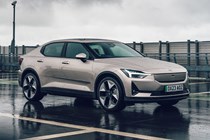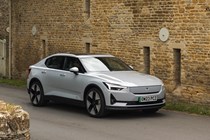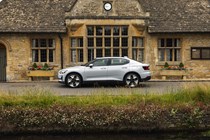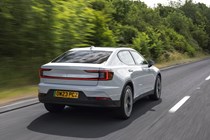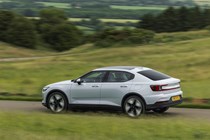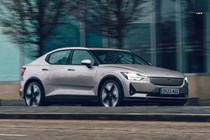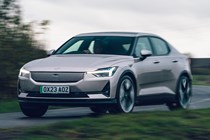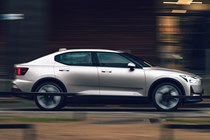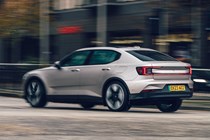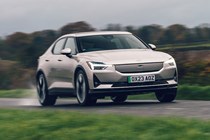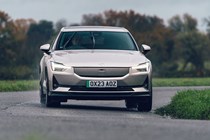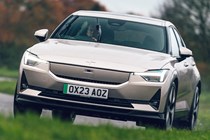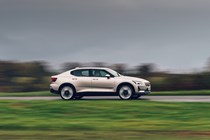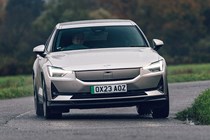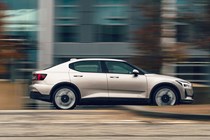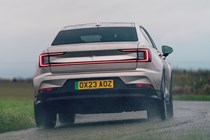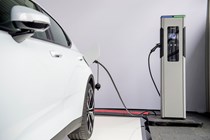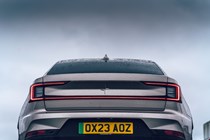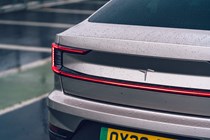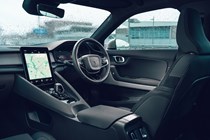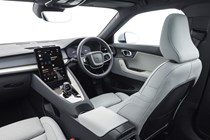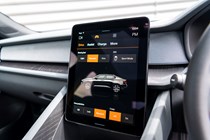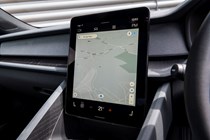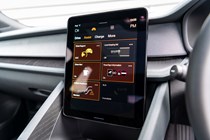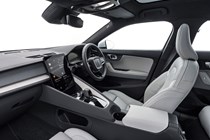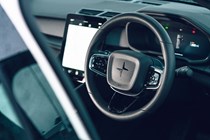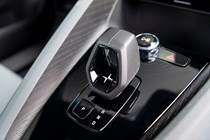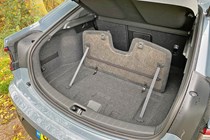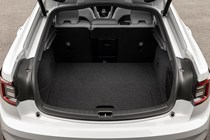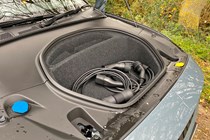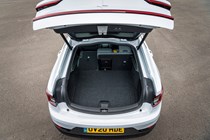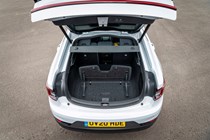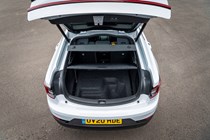Polestar 2 engines, drive and performance

- Available as a single- or dual-motor
- Dual-motor has plenty of power, sports car punch
- Porsche-slaying acceleration on tap
What power options are there?
There are four models to choose from. The 476hp dual motor Performance Pack model is the top-of-the range, the 321hp Long Range dual motor setup sits below that, the 299hp Long Range single motor underneath that, and at the bottom of the range lies the Standard Range single motor with 272hp.
All EVs are quick at the traffic light grand prix from 0-30mph, but the Polestar’s trick is how urgent acceleration is available even at higher speeds. Prod the accelerator on a motorway to overtake uphill, and the 2 will surge forwards on a wave of silent, electric thrust. It’s utterly captivating, even in the single motor cars.
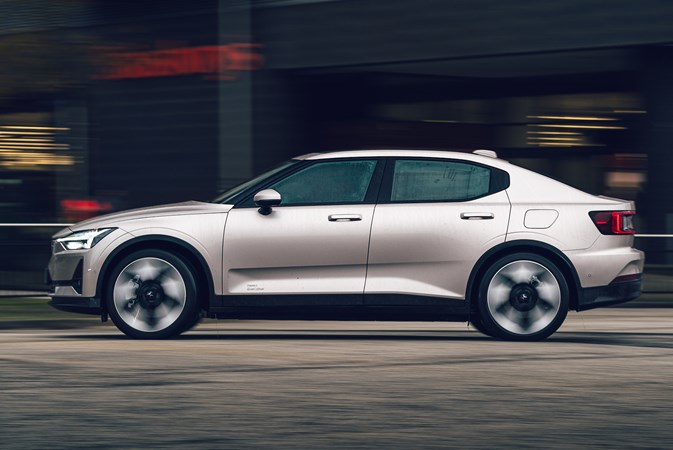
Yet this car is very easy to drive in day-to-day conditions and that performance potential is never daunting. It’s a very easy car to thread around town, although you should be aware there is a shallow rear window which presents what looks like a daunting blindspot at first glance. In reality, large mirrors, blindspot indicators in the frameless door mirrors and a very good 360-degree parking camera mean that it’s never really a problem in daily duty.
There aren’t any driving modes as such, but you can adjust the power steering for finger-tip-light or heavier assistance, and you can also tweak the regenerative braking, which can be set to coast or claw back maximum charge. Once you’re used to it, you’ll rarely have to prod the brake pedal at all; a mere lift of the accelerator will do all the deceleration for you.
What’s it like to drive?
- Easy car to drive
- Well judged steering and handling
- Harsh ride
You’ll find plenty of grip in the bends and loads of traction when accelerating. As a car for getting from A to B quickly, it’s pretty impressive as a single or dual motor. Those hoping a switch to rear-wheel drive would turn the 2 into a drift machine will be disappointed, but it provides much more traction and does improve the balance under power.
While it inherits Volvo steering hardware, the software and tuning is very much Polestar’s, and that means it has a well judged weighting to it. You won’t feel particularly connected to the front tyre’s activities, but it’s not like the Model 3 is involving, either.

If you’ve chosen the dual motor, you can add the Performance Pack that brings special Ohlins dampers that can be tuned to your preference, larger wheels and tyres, and better front brakes. Be aware that adjusting the dampers involves reaching under the front wheel arch and jacking the rear of the car up – something that should be done with a specialist tool. If you have said equipment, it’s a fairly straightforward process.
So equipped this is a car with an enormous amount of grip and a nicely balanced feel, giving you lots of confidence to push towards its limits, which on the road seem largely unreachable.
Comfort, sadly, seems a bit secondary to the Polestar 2. The chassis is extremely rigid and the car feels jittery as a result. On Britain’s not-so-smooth B roads the 2 jiggles from bump to bump and dives deep into potholes. It feels even worse in the rear as passengers back here sit nearly directly over the rear axle.
At 30mph in town it feels firm but usable enough, and at 70mph on the motorway it’s pliant, managing to sail over most irritations. But at nearly every speed in between you’ll be wincing due to the vibrations coming up through your seat. The BMW i4 is also firm, but a lot less jarring.


